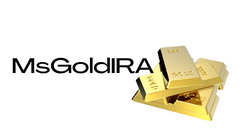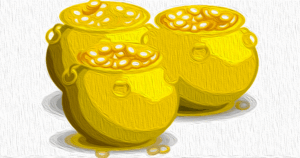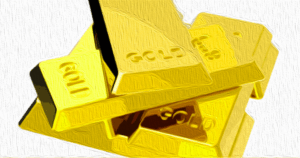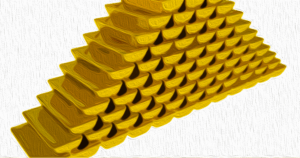
Introduction
Bitcoin, the leading cryptocurrency, is currently trading between $42,750 and $42,964, with an intraday range of $41,820 to $43,192. Despite price fluctuations, Bitcoin's market capitalization remains strong at $841 billion, accompanied by a 24-hour trade volume of $25.32 billion. Oscillators indicate a neutral stance, while moving averages suggest a cautiously optimistic sentiment in a complex market.
Bitcoin Analysis
Oscillators and Indicators
Bitcoin's oscillators provide a mixed bag of signals. The relative strength index (RSI) sits at 55, indicating a balance in the market. Other indicators, such as the Stochastic, commodity channel index, and awesome oscillator, also remain in neutral territory. The momentum (10) suggests a bullish sentiment, while the moving average convergence divergence (MACD) level (12, 26) leans towards a bearish zone. These contradictions reflect the complexities of market sentiment.
Moving Averages
Bitcoin's moving averages (MAs) across different time spans show predominantly positive market sentiment. The longer-term averages, in particular, exhibit a bullish trend. This indicates a growing investor confidence over time, potentially signaling a more favorable long-term outlook for Bitcoin. The market appears cautious but leans towards appreciating value gradually.
Daily Chart Analysis
The daily chart reveals a rally in Bitcoin's price from around $35,000 to a peak near $44,729, followed by a consolidation phase with a slight downward bias. This pattern suggests a market taking a breather after a significant climb, possibly preparing for the next move. Traders can monitor the resistance and support levels for breakout or breakdown signals.
4-Hour Chart Analysis
Zooming in to the 4-hour chart, Bitcoin's price action shows alternating ups and downs, indicating short-term uncertainty. However, recent spikes and notable volume suggest growing buying interest and a potential strengthening of the bullish movement. Traders can use this micro-view to identify immediate market reactions and potential entry or exit points.
Combining Insights
When combining insights from both the daily and 4-hour charts, a strategy of cautious optimism emerges. The daily chart's consolidation phase advises patience, suggesting an imminent decisive move. Meanwhile, the 4-hour chart's recent momentum offers short-term trade opportunities, requiring nimbleness and responsiveness to quick changes while considering the broader market context.
Bull Verdict
As we conclude our market analysis, Bitcoin's bull verdict shines through with cautious optimism. The consistent buying signals from moving averages, along with the resilience displayed in Bitcoin's price, suggest strong investor sentiment and market structure. If buying momentum continues and surpasses resistance levels, we could witness an upward trajectory, potentially ushering in a bullish chapter for Bitcoin.
Bear Verdict
On the other hand, Bitcoin's bear verdict casts a shadow of caution over its immediate future. Despite occasional bullish signals, the presence of contradictory oscillators and the recent consolidation phase hint at underlying vulnerabilities. If sell-off pressures intensify and Bitcoin breaks below crucial support levels, the market may experience a downturn, testing the resilience of buyers and the true value proposition of Bitcoin.
To stay updated with weekly price analysis, register your email here.
What are your thoughts on Bitcoin's market action on Wednesday morning? Share your opinions in the comments section below.
Frequently Asked Questions
What are the three types of IRAs?
There are three main types of IRAs. Each type of IRA has its pros and cons. We'll go over each of them below.
Traditional Individual Retirement Accounts (IRA)
A traditional IRA allows you to contribute pre-tax money to an account where you can defer taxes on contributions made now while earning interest. The account can be withdrawn tax-free once you are retired.
Roth IRA
Roth IRAs allow you to deposit after-tax dollars into an account. This allows earnings to grow tax-free. If you withdraw funds for retirement, your withdrawals from the account are exempted of tax.
SEP IRA
This is similar with a Roth IRA, but employees are required to make additional contributions. These additional contributions are taxed, but any earnings grow tax-deferred once again. You may choose to convert the entire amount to a Roth IRA when you leave the company.
Are you able to keep precious metals in your IRA?
This depends on the IRA's owner's desire to diversify or keep his holdings in silver and gold.
He can choose to diversify if he so desires. He could buy physical bars of gold and/or silver from a dealer or sell these items back to the dealer at the end of the year. Imagine he doesn't desire to sell off his precious metals investments. He could keep the precious metals as long as he wants to.
How Do You Make a Withdrawal from a Precious Metal IRA?
If your account is with a precious metal IRA firm such as Goldco International Inc., you may want to consider withdrawing funds. When you sell your metals, the value of those funds will be higher than if it was kept in the account.
If you are unsure how to withdraw money from your precious metal IRA, here is what you need to know.
First, you need to find out if the provider of your precious metal IRA allows withdrawals. Some companies permit this, while some don't.
Second, find out if you are eligible for tax-deferred gains from selling your metals. This benefit is available from most IRA providers. Some providers do not offer this benefit.
To find out if fees apply, thirdly check with your precious-metal IRA provider. It is possible that the withdrawal will be more expensive.
Fourth, you should keep track of precious metal IRA investments for at minimum three years after they are sold. This means that you must wait until January 1st of each year to calculate capital gain on your investment portfolio. Next, fill out Form 8949 to determine the amount you gained.
You must file Form 8949 and also report any sale of precious metals to IRS. This will ensure you pay taxes on all the profits that your sales generate.
Consider consulting a trusted attorney or accountant before selling your precious metals. These professionals can ensure that you adhere to all procedures and avoid costly errors.
Are precious metal IRAs a good way to invest?
How willing you are to risk your IRA account losing value will decide the answer. These are good if you have $10,000 of cash and don't expect them grow quickly. These might not be the best options if you're looking to invest in assets that have the potential to rise in value (gold) and plan to save for retirement for many decades. They can also come with fees that could cut into any gains.
Statistics
- To qualify as IRA allowable precious metals and be accepted by STRATA, the following minimum fineness requirements must be met: Gold must be 99.5% pure, silver must be 99.9% pure, and platinum and palladium must both be 99.95% pure. (stratatrust.com)
- Silver must be 99.9% pure • (forbes.com)
- Same tax rules as traditional IRA SEP IRA contributions in 2022 are limited to 25% of compensation or $66,000, whichever is less Before setting up a Silver IRA, understand the fees and IRS restrictions. (sltrib.com)
- SEP-IRA”Simplified employee pension” For self-employed people like independent contractors, freelancers, and small-business ownersSame tax rules as traditional IRASEP IRA contributions in 2022 are limited to 25% of compensation or $66,000, whichever is less4. (sltrib.com)
External Links
takemetothesite.com
regalassets.com
en.wikipedia.org
investopedia.com
How To
How to determine if a Gold IRA works for you
The most popular type of retirement account is the Individual Retirement Account (IRA). IRAs can also be purchased through banks, mutual funds, financial planners, and other institutions. The IRS allows individuals to contribute up $5,000 annually without worrying about tax consequences. This amount can be deposited into any IRA, regardless your age. There are limitations on the amount of money that you can contribute to certain IRAs. For example, a Roth IRA contribution is not allowed if you are less than 59 1/2. For those who are younger than 50, contributions can only be made after you turn 70 1/2. Additional, employees who work for their employer might be eligible to receive matching contributions.
There are two main types: Roth and traditional IRAs. A traditional IRA lets you invest in stocks, bonds, real estate, and other investments, while a Roth IRA lets you invest only in after-tax dollars. Contributions to a Roth IRA aren't taxed when they come out, but withdrawals taken from a Roth IRA are taxed once again. A combination of both accounts may be preferred by some people. Each type is different. There are pros and con's to each. How do you choose the best type of IRA for you? Keep these three things in mind:
Traditional IRA Pros
- The company can choose from different contribution options
- Employer match possible
- Save more than $5,000 per Person
- Tax-deferred Growth until Withdrawal
- Limitations may apply based on income levels
- Maximum contribution limit: $5,500 per annum (or $6,500 for married filing jointly).
- The minimum investment required is $1,000
- After you turn 70 1/2, you can begin receiving mandatory distributions
- For an IRA to be opened, you must have at least five-years-old
- Transfer assets between IRAs is not possible
Roth IRA Pros
- Contributions are tax-free
- Earnings increase without tax
- Minimum distribution not required
- There are only a few investment options available: stocks, bonds and mutual funds.
- There is no maximum allowed contribution
- There are no limitations on the ability to transfer assets between IRAs
- Age 55 or older to open an IRA
If you are thinking about opening an IRA, it is important to be aware that not all companies offer exactly the same IRAs. Some companies allow you to choose between a Roth IRA or a traditional IRA. Some companies will allow you to combine both. There are different requirements for different types. For example, a Roth IRA has no minimum investment requirement, whereas a traditional IRA requires a minimum investment of just $1,000.
The Bottom Line
When you are choosing an IRA, it is crucial to consider whether you will pay taxes now or in the future. If you plan to retire in the next ten years, a traditional IRA might be the best choice. Otherwise, a Roth IRA may be better suited for you. In either case, it's a smart idea to speak with a professional about your retirement plans. A professional can help you determine the best option for your situation and keep track of what's going on in the market.
—————————————————————————————————————————————————————————————-
By: Jamie Redman
Title: Bitcoin Technical Analysis: Evaluating the Market Forces Impacting BTC
Sourced From: news.bitcoin.com/bitcoin-technical-analysis-analyzing-the-push-and-pull-of-btcs-market-forces/
Published Date: Wed, 27 Dec 2023 13:30:35 +0000












